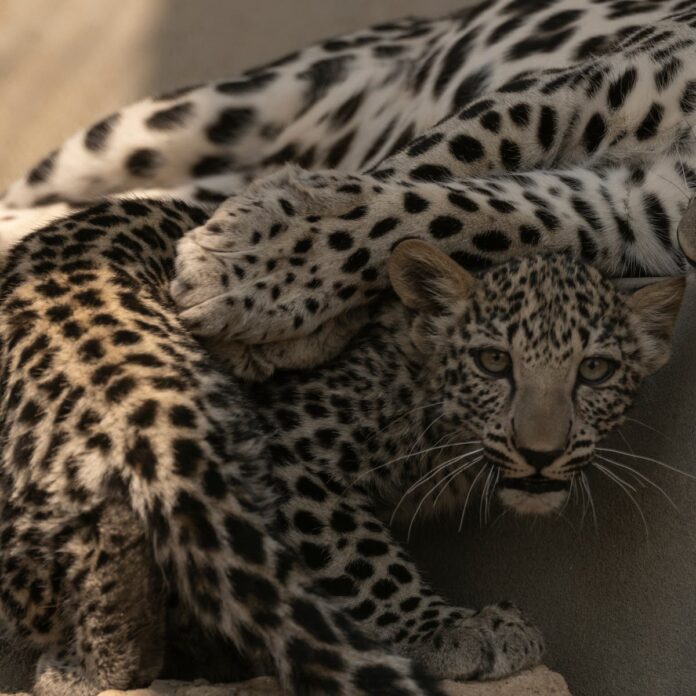David Chancellor is looking into the eyes of Hope.The celebrated wildlife photographer is at the leopard breeding centre in Taif, Saudi Arabia. He is playing hide and seek with Amal – Arabic for ‘hope’ and her sister, two Arabian leopard cubs born in the centre this year.’She’s shy, ‘ says David, ‘and something deep inside me hopes that will always be the case’.The cubs, like their parents before them, will spend their whole lives in captivity. They’ll be fed by keepers, protected from the outside world – a world that has brought their species to the brink of extinction.But when they are old enough to breed, there is a good chance their cubs will no longer be contained behind the fences. They will be let out into a world which will finally have learned to live with their species. That next generation of Arabian leopards will be free to roam the Arabian peninsula. “The birth of two female cubs of this rare species represents a wonderful new hope in our quest to restore the power of nature’s balance and reintroduce the leopard to AlUla,” said Amr AlMadani, chief executive of the Royal Commission of AlUla.The birth of the cubs is a big moment in an historic mission to reintroduce one of the world’s most charismatic, elusive and endangered animals to the land where, until well into the 20th century, it was the apex predator.’The hope is that in the not too distant future she will contribute to the rewilding of this landscape,’ says David Chancellor. ‘And that these truly majestic cats are reintroduced back into their rightful position. A lot of work will need to be done before that happens, but what we see here is an enormously bright light by which progress can be illuminated’.The story of the Arabian leopard is a familiar one, but no less sad for that. They were hunted – for sport, and to protect domestic livestock. They were poisoned. The smaller mammals they preyed upon disappeared as they lost their habitat to the desert. Today, there may be two or three wild leopards left in Saudi Arabia. As Hani Tatwany, CEO of the Arabian Leopard Fund told us, ‘one could be right next to you in a wadi and you wouldn’t know it. They will just sit there and watch you.’But for leopards born to captive animals, those stealthy skills may need to be taught.We asked Stephen Browne, Wildlife and Natural Heritage Executive Director at The Royal Commission for AlUla, how the leopards will be prepared for the wild. AlUla is the majestic, ancient, 9,000 square mile area of north-west Saudi Arabia which is destined to be the yet unborn cubs’ new home.’We need to train them about humans,’ says Dr Browne. ‘They shouldn’t even smell us. Above all, they can’t have any positive associations with us.’These first wild leopards will live a very different early life to their parents. They will need to catch prey – rabbits and quail to begin with, then larger prey, like deer.The AlUla team is confident they will be ready for the mountainous sites that have already been earmarked for their release.The harder job, perhaps, is training people. As the new families of leopards are gradually weaned away from their protected existence, so the work begins to educate herders and farmers.It’s a mixture of practical help and stiff deterrents. The pastoralists will be encouraged to build overnight shelters for their livestock – and recruit formidable guards, such as the redoubtable Anatolian sheepdog. They’ll be insured against any losses to predators.Poisons and guns will be strictly controlled. If any leopards are killed, the penalties will be serious.As one conservationist told us, ‘they are the King’s animals, after all.’ And they are also the future of the kingdom, not a sorrowful part of its past.


